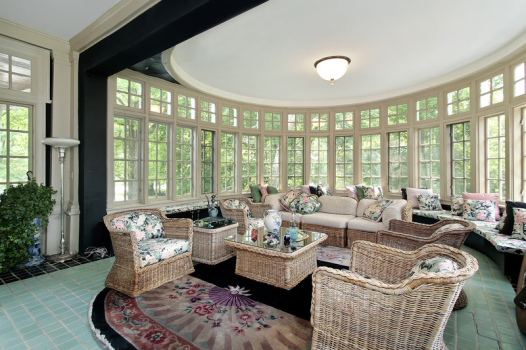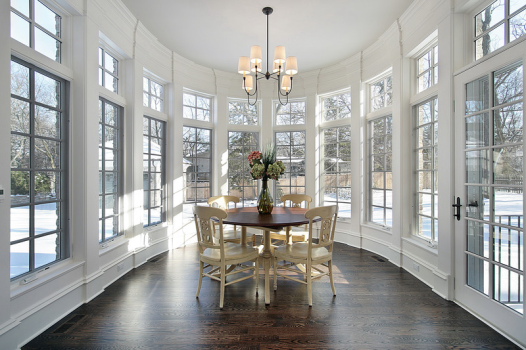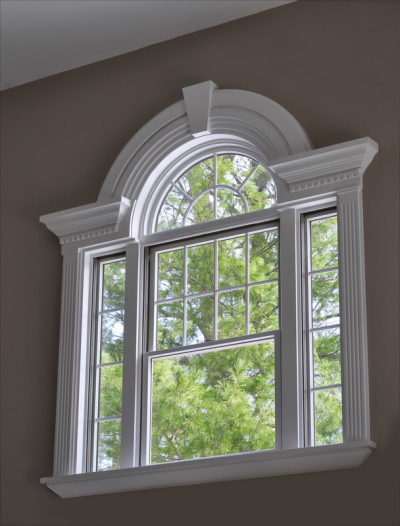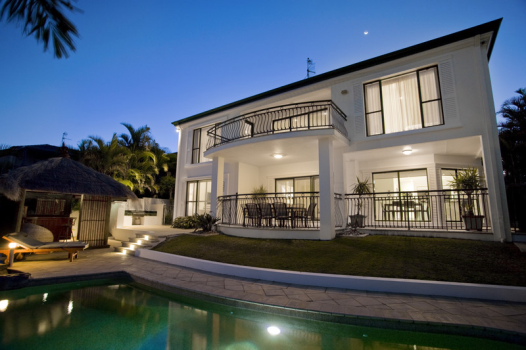A homeowner may decide to get their windows replaced due to a number of reasons such as:
1. Air (or water leakage) - this is one of the main reasons why a homeowner would choose to replace their windows. Air leakage can cause the home to feel a lot colder in winter and a loss of cold air in summer. Of course this would result in constant changing of the thermostat settings. It may also result in freezing of the seals making it impossible to properly open or close the windows in winter.

2. Cosmetic – a homeowner may decide that a new look and feel is needed in the home which can be achieved by replacing the windows similar to repainting a room.
3. Investment – replacing windows when selling the house can help increase its value.
4. Worn out hardware - the materials or lever handles may be defective or worn out making it impossible for proper usage of the window.
5. Windows that are not properly closed can cause freezing in winter and thawing after which results in excessive moisture on any wood framing. This can also result in mold buildup.
6. Exterior frames rotted –exterior frames are subjected to wear and tear due to inclement weather. Generally, any wood trims around the window’s exterior should be capped with aluminum or vinyl to protect them from the elements. Yet if this capping is not done by a professional, it can cause more harm by trapping moisture on the wood behind it increasing the decay process. In addition, capping cannot be done where the trim is ornate or multi trim is used. The cladding used may also need to be repainted occasionally to maintain its appearance. Cladding may help achieve a marginal saving with energy efficiency because it provides a second layer of draft prevention between the exterior and interior. Yet the saving may be too small to quantify and therefore energy saving would not be a good reason for deciding to cap your windows.
7. Energy costs - is another major reason for having windows replaced. Air leakage through your windows can adversely impact your heating or cooling bill. Many people are not aware of how much extra they spend annually on heating because of inefficient windows. Many clients are amazed at how much lower their bills are after new windows are installed.
Awning windows
This type of window is a top-hinged design that opens to the outside. It is designed to bring in light and be more airy. These windows can be opened slightly to allow air circulation and still maintain privacy. This style would be a good option for a bedroom. It can also be positioned next to other windows and be installed over or under other stationary windows. Awning windows are a good option for people who like to keep their windows open while it is raining. The window slopes downwards so the rain does not get in.

Casement Windows
Casement windows are side-hinged and swing outward, opening thoroughly, bringing in a lot of light and air. Casement windows can be hinged on either the left or right side. They crank open as opposed to sliding up and down, which allows for maximum amount of air circulation.
This type of window works well where there are hard to reach places like over the kitchen sink. It is also a good choice in the bedroom for houses without air conditioning. One of the downsides to casement windows is that the crank handle may tend to become rusty or faulty. Casement windows generally seal better than most other window types and are possibly the best for energy efficiency.
Single/Double Hung Windows
This style of window was traditionally used in older homes. The single hung window can be opened from sliding the window bottom to the top. Whereas the double hung window can be opened both ways. These windows can be installed in any part of the home, but were traditionally installed in kids bedrooms. Homes are switching out of these styles of windows mainly because they tend to leak more air than other types of windows. Also, the window can only be opened half way as opposed to other styles of windows that opens out fully.

Picture Window
Picture windows or stationary windows are ideal for areas that do not require ventilation. They are great for providing an unobstructed view of the outside. Picture windows are ideal for areas that have high ceilings, hallways or the attic. Generally, people do not use these windows other than for their visual appearance.
They are not used for functionality. They can be used in conjunction with other windows, especially the awning or casement windows to reduce the cost when replacing really large windows.

Bay Window
Using a bay or bow window can maximize the light that comes into a room, streaming from different angles making the room feel more open and promoting a peaceful effect. They also tend to make the room seem more roomy. In many cases a Bay window is achieved by using one stationary pane in conjunction with casement windows on both sides. Therefore, both sides can open fully for ventilation. Replacing from flat to a bay window may require some structural changes but will certainly make any home look more updated and sophisticated. Bay windows are primarily used in rooms facing the front of the house. These windows can also be suitable in master bedrooms or kitchens.
Hopper Window
Hopper window pivots from the bottom and open inward. This type of window is best suited for the basement. Privacy and home décor can be difficult with hopper windows. Blinds, shades or other accessories do not work as well because the window opens towards the inside of the room. As you can imagine, this would not be a good window to leave open when it is raining.
Custom Windows
Windows can be customized to fit any opening, and there would be some flexibility in creating a design to suit your needs. They can be designed in a variety of sizes and shapes. Custom windows provide character and flair to a home. Windows of different types can be paired to create your custom look. Custom windows can be more expensive than on-the-shelf windows and generally has a 2 -3 week wait time.
Window Frames
Wood Frame
Wood frames have traditionally been the most common type used in homes. It can be easily painted or stained. Wood frames are strong and solid and acts as a natural insulator. Wood frames do have some downsides; they require constant maintenance and appearance upgrades, they tend to rot and may result in paint peeling. In more recent homes, the exterior wood frames have been capped or cladded with either aluminum or vinyl to help protect it from the elements. Wood frames are slowly being phased out by homeowners and builders and are making way for greater usage of vinyl frames.

Vinyl Frame
Contractors and homeowners tend to use vinyl windows as their number one choice of frames. Vinyl frames are very energy efficient and extremely durable. Unlike wood windows, they are non-corroding and requires little or no maintenance. Vinyl frames are generally not painted but is often available in white and other neutral colours. Vinyl frames comes in a wide range of styles and shapes, it is cost effective and very easy to install.
Aluminum Frame
Like vinyl frame types, aluminum frames are durable and strong. Aluminum frames are narrow. This maximizes the view because of the design of the frame. The slim frame provides a modern and more of a futuristic look. Aluminum windows would not rust or corrode and it has low maintenance similar to the vinyl frames but they can be more difficult to clean. Aluminum frames are more often seen in apartment buildings.
